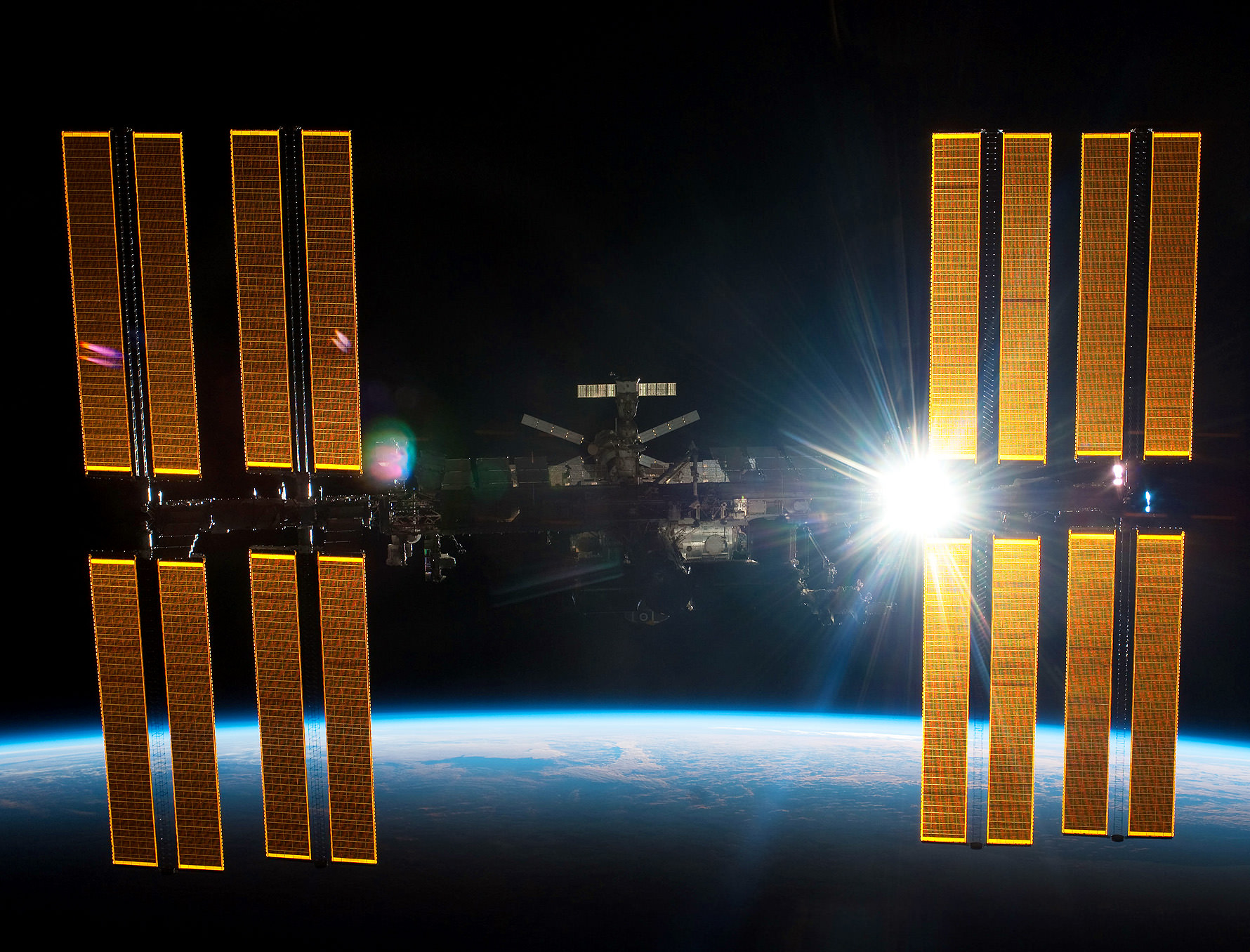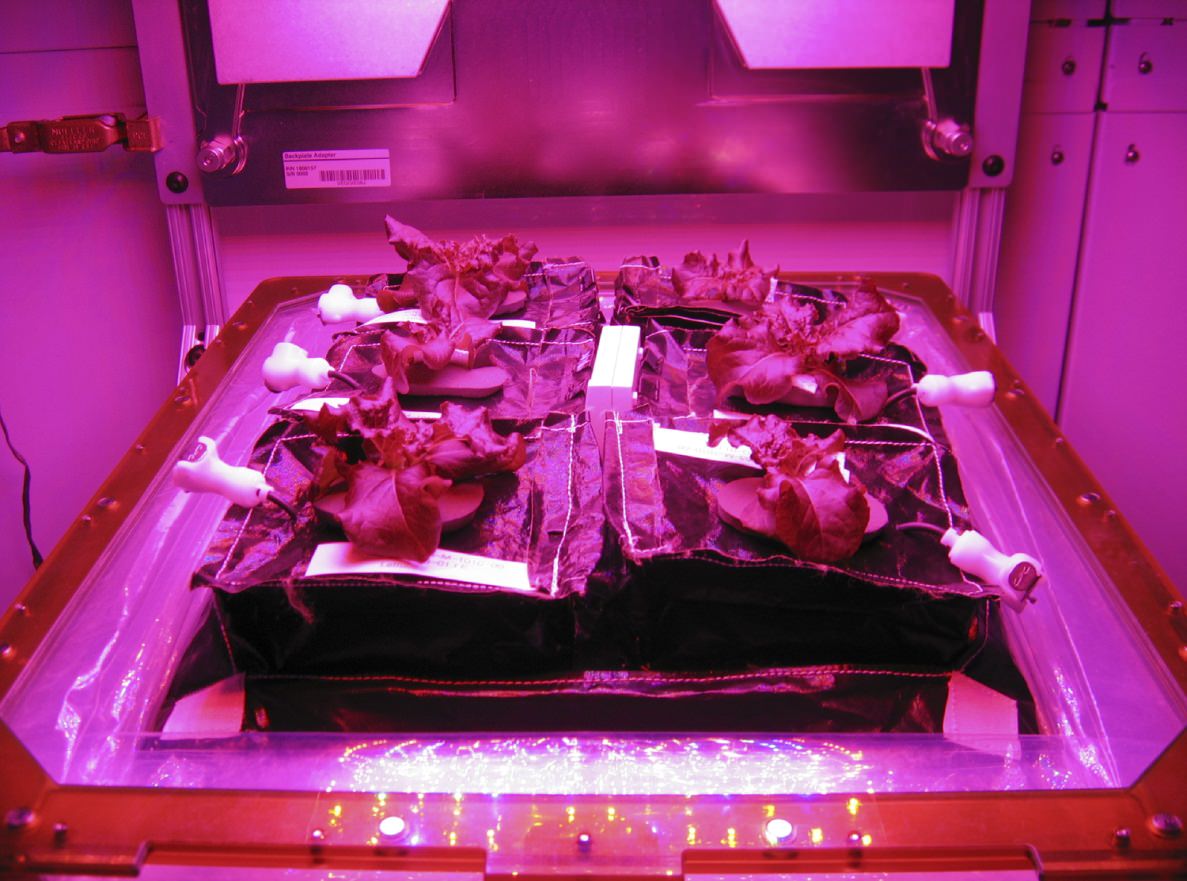Host: Fraser Cain
Guests: Casey Dreier, Brian Koberlein, Jason Major, Sondy Springmann, David Dickinson
Continue reading “Weekly Space Hangout – April 18, 2014: Another Earth, Dragon Launch, LADEE Impact”
SpaceX Dragon launch to ISS Marches Towards April 18 Liftoff after Helium Leak Forces Scrub – Watch Live
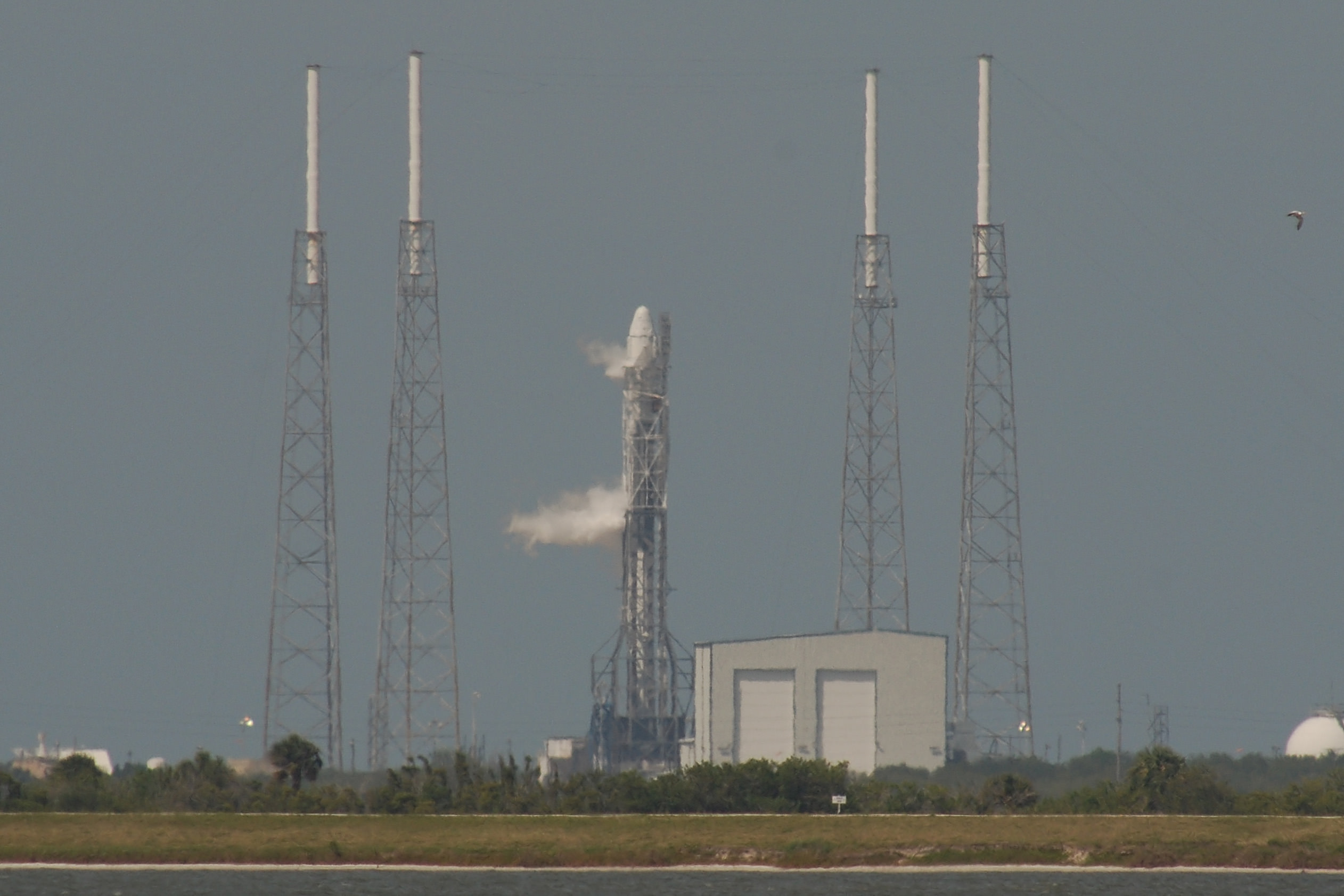
NASA and SpaceX are marching forward towards a Friday, April 18 liftoff attempt for the Falcon 9 rocket sending a commercial Dragon cargo craft on the company’s third resupply mission to the International Space Station following the scrubbed launch attempt on Monday, April 14 – forced by the discovery of a Helium gas leak inside the rocket during the latter stages of the countdown.
An on time blastoff of the upgraded Falcon 9 sets the stage for an Easter Sunday rendezvous and berthing of the Dragon resupply spacecraft at the massive orbiting outpost packed with almost 5000 pounds of science experiments and supplies for the six person crew.
However the weather prognosis is rather iffy for Friday afternoons launch attempt at 3:25:21 p.m. EDT from Space Launch Complex 40 at Cape Canaveral Air Force Station in Florida.
Forecasters predict only a 40 percent “GO” of acceptable weather conditions at the appointed liftoff time of the SpaceX-3 mission – roughly the time when the Earth’s rotation moves the rocket into the plane of the space stations orbit.
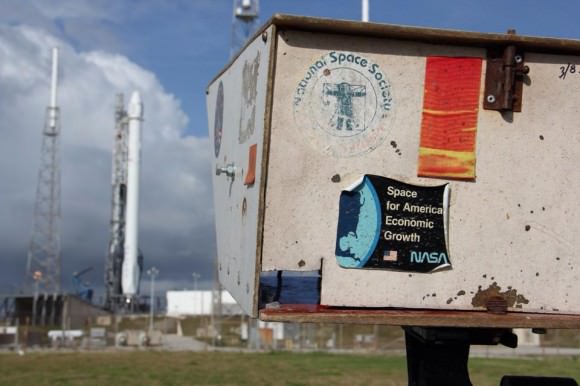
Meteorologists with the U.S. Air Force 45th Weather Squadron are predicting a significant chance of rain showers and thunderstorms in the Florida Space coast launch area that could violate three launch rules, namely the Thick Cloud, Lightning and Flight Through Precipitation rules.
In the event of a scrub for any reason on Friday, NASA, SpaceX and Air Force managers approved another backup launch opportunity on Saturday, April 19 at 3:02:42 p.m.
The weather outlook for a Saturday liftoff improves somewhat to 60 percent “GO”.
Originally, Monday and Friday were the only available launch target dates this week.
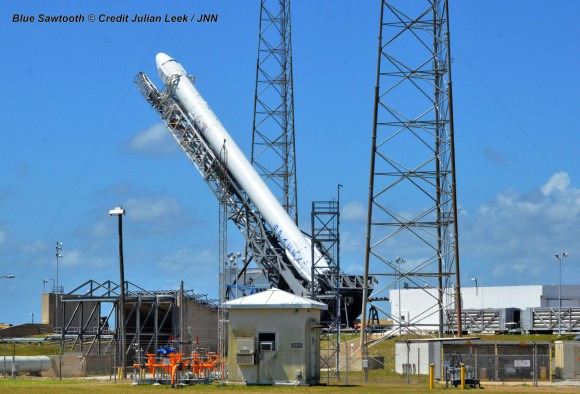
Assuming a successful Falcon 9 launch on Friday, station crew members Rick Mastracchio and Steven Swanson will grapple the Dragon cargo freighter with the 57 foot long Canadarm2 on Easter Sunday morning, April 20, at 7:14 a.m. at then berth it at the Earth-facing port of the Harmony module.
You can watch the launch live on NASA TV: http://www.nasa.gov/ntv
NASA TV live coverage will begin at at 2:15 p.m. EDT
SpaceX live launch coverage begins at 2:45 p.m. ET: Webcast at www.spacex.com/webcast
NASA TV coverage of the Easter Sunday grappling process will begin at 5:45 a.m. with berthing coverage beginning at 9:30 a.m. : http://www.nasa.gov/ntv
Monday’s launch attempt was scrubbed about an hour before liftoff when SpaceX mission controllers and engineers detected that a helium valve in the pneumatic system for stage separation between the first and second stages was not holding the specified pressure.
The success of the mission was therefore dependent on the perfect operation of a backup check valve for the stage separation pistons.
Although no technical issues were detected with the backup valve, the anamolous situation violated SpaceX launch rules.
“SpaceX policy is not to launch with any known anomalies,” said SpaceX in a statement.

The erect Falcon 9 was lowered back to the horizontal position so that SpaceX engineers could swap out the faulty helium valve, as well as conduct a complete inspection of the rocket to look for signs of any other issues that may have contributed to the valve not working as designed, said SpaceX.
This unmanned SpaceX mission dubbed CRS-3 will deliver some 5000 pounds of science experiments, a pair of hi tech legs for Robonaut 2, a high definition imaging camera suite, an optical communications experiment (OPALS) and essential gear, the VEGGIE lettuce growing experiment, spare parts, crew provisions, food, clothing and supplies to the six person crews living and working aboard the ISS soaring in low Earth orbit under NASA’s Commercial Resupply Services (CRS) contract.
To date SpaceX has completed two operational cargo resupply missions and a test flight. The last flight dubbed CRS-2 blasted off a year ago on March 1, 2013 atop the initial version of the Falcon 9 rocket.
NASA awarded contracts to SpaceX and competitor Orbital Sciences to develop unmanned cargo freighters via CRS to restore US capability to resupply the ISS following the shutdown of the space shuttle program in 2011.
SpaceX is under contract to NASA to deliver 20,000 kg (44,000 pounds) of cargo to the ISS during a dozen Dragon cargo spacecraft flights through 2016 at a cost of about $1.6 Billion.
The next launch of Orbital Sciences Antares/Cygnus commercial rocket to the ISS from NASA Wallops, VA, is tentatively slated for May 6. But the target date hinges on when this SpaceX-3 mission actually flies and could slip into mid-June.
Stay tuned here for Ken’s continuing SpaceX, Orbital Sciences, commercial space, Orion, Chang’e-3, LADEE, Mars rover, MAVEN, MOM and more planetary and human spaceflight news.
SpaceX Leases Historic Launch Complex 39A from NASA for new Era of Commercial Space Launches
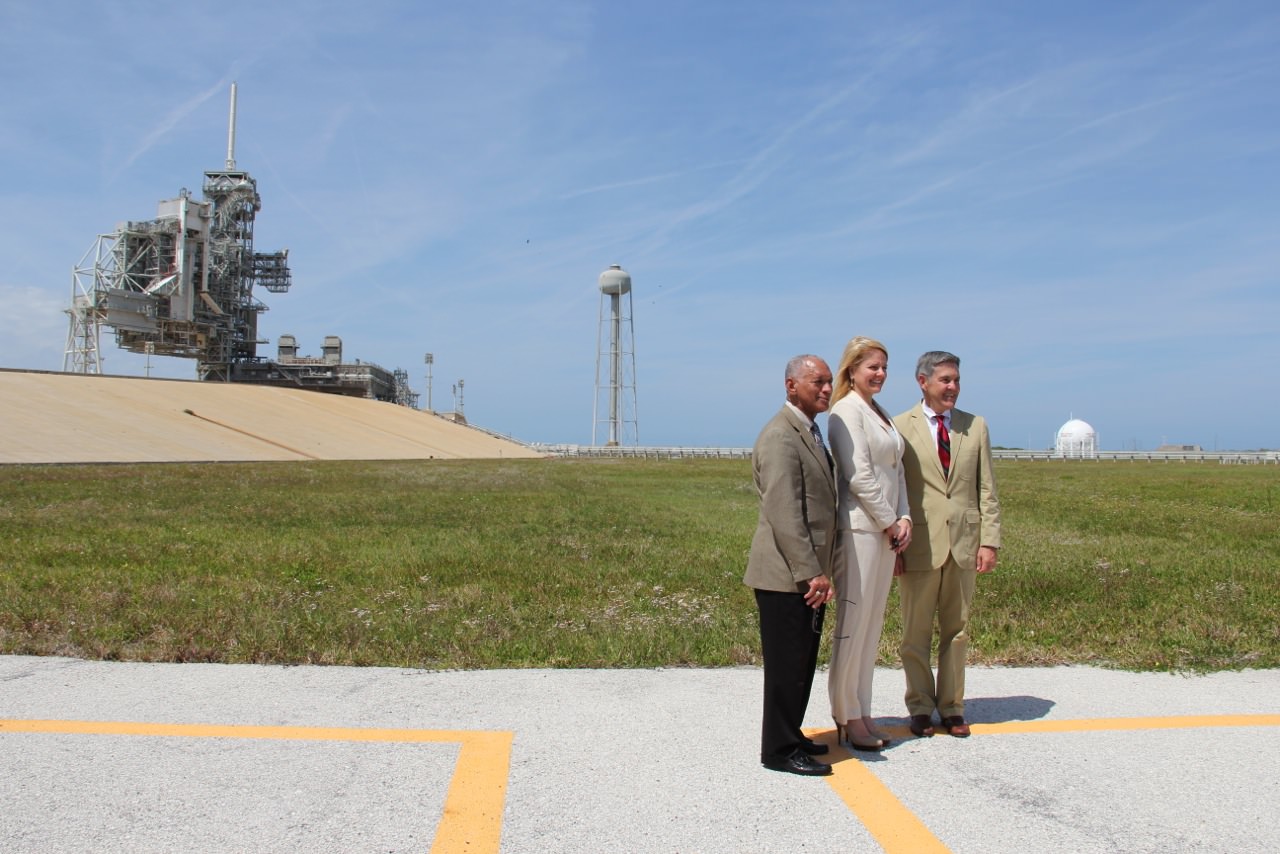
The keys to NASA’s historic launch Pad 39A that propelled humanity’s first man to walk on the Moon – Neil Armstrong – during the history making flight of Apollo 11, have been handed over to new owners, namely the private aerospace firm SpaceX for a new purpose – serving as a commercial launch facility.
NASA and Space Exploration Technologies Corporation (SpaceX) of Hawthorne, Calif., have just signed an agreement giving SpaceX rights to occupy and operate seaside Launch Complex 39A at the Kennedy Space Center (KSC) in Florida.
SpaceX was founded by billionaire, entrepreneur and space visionary Elon Musk.
SpaceX aims to give the now dormant pad a new lease on life in the emerging New Space era by revitalizing it as a commercial launch site for the company’s mammoth new Falcon Heavy rocket, currently under development, as well as for manned launches of the firm’s human rated Dragon spacecraft atop the Falcon 9 according to Gwynne Shotwell, president of SpaceX.
“We’ll make great use of this pad, I promise,” Shotwell told reporters at a briefing at the pad.
The liquid fueled Falcon Heavy will be the most powerful rocket in the world according to SpaceX, generating generating nearly four million pounds of liftoff thrust from 27 engines and thus significantly exceeding the power of the Delta IV Heavy manufactured by competitor United Launch Alliance.
Shotwell said renovations to pad 39A would start later this year. The maiden SpaceX launch from the complex is expected next year.
“We will launch the Falcon Heavy from here from this pad early next year,” Shotwell stated.
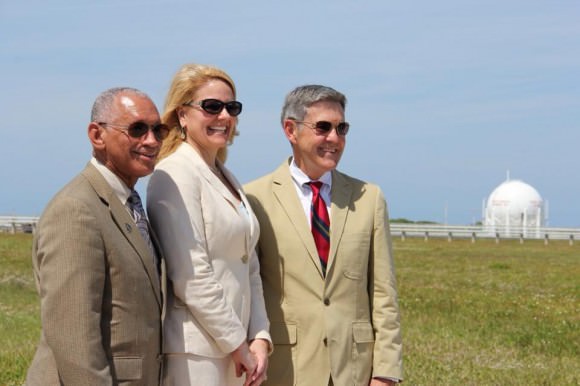
The SpaceX Dragon is one of three commercial crew vehicles being developed under a public-private partnership with NASA to ferry US astronauts to the International Space Station (ISS) and restore America’s human spaceflight capability lost since the shuttle’s retirement.
The Boeing CST-100 and Sierra Nevada Dream Chaser are also vying for the next round of private ‘space taxi’ funding from NASA.
Pad 39A has been inactive and mothballed since the last shuttle mission, STS-135, thundered to space in July 2011.
Not a single rocket has rolled up the ramp at KSC in nearly 3 years.

Credit: Ken Kremer/kenkremer.com
The new lease agreement was signed by NASA and SpaceX officials and announced onsite at Pad 39 at the briefing.
“Today this historic site from which numerous Apollo and space shuttle missions began and from which I first flew and left the planet on STS-61C on Columbia, is beginning a new mission as a commercial launch site,” said NASA Administrator Charles Bolden.
“While SpaceX will use pad 39A at Kennedy, about a mile away on pad 39B, we’re preparing for our deep space missions to an asteroid and eventually Mars. The parallel pads at Kennedy perfectly exemplify NASA’s parallel path for human spaceflight exploration — U.S. commercial companies providing access to low-Earth orbit and NASA deep space exploration missions at the same time.”
Under terms of the new agreement with NASA, the lease with SpaceX spans 20 years.
“It’s exciting that this storied NASA launch pad is opening a new chapter for space exploration and the commercial aerospace industry,” said Bolden.
SpaceX will also maintain and operate Pad 39A at its own expense, with no US federal funding from NASA.
Pad 39A will be SpaceX’s third launch site. The company also launches its Falcon 9 rockets from nearby Pad 40 on Cape Canaveral Air Force Station and a west coast pad on Vandenberg Air Force Base, Calif.
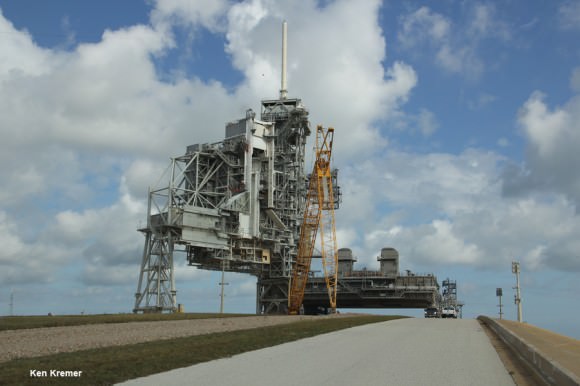
The next Falcon 9 liftoff with an unmanned Dragon cargo freighter is currently slated from Friday, April 18 following Monday’s scrub.
NASA determined that the agency no longer has a use for pad 39A since the end of the shuttle era and has been looking for a new tenant to take over responsibility and pay for maintenance of the launch complex. The agency awarded the lease to SpaceX in December 2013.
Instead, NASA decided to completely upgrade, renovate and modernize Pad 39As twin, namely Launch Pad 39B, and invested in converting it into a 21st Century launch complex.
NASA will use Pad 39B to launch the state of the art Orion crew vehicle atop the new Space Launch System (SLS) booster for voyages beyond Earth and taking humans back to the vicinity of the Moon and further out on deep space missions to Asteroids, Mars and beyond.
The first unmanned SLS test flight from Pad 39B is slated for late 2017.
Pad 39A was an active NASA launch pad for nearly 35 years starting back near the dawn of the Space Age in the 1960s.
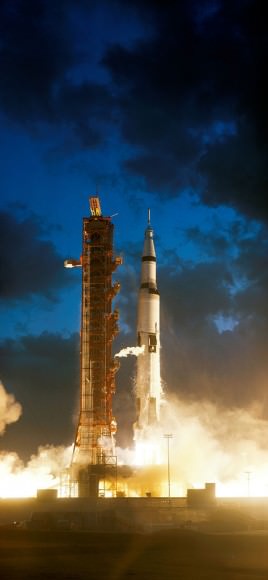
Apollo 4 was the first NASA booster to blast off from Pad 39A on Nov. 9, 1967 during the historic inaugural test flight of the Saturn V moon rocket that eventually served to dispatch all six US manned lunar landing missions.
The closing NASA use of Pad 39A took place on July 8, 2011 with the launch of STS-135 and orbiter Atlantis on the final flight of the space shuttle era.
The four person STS-135 crew delivered the last US pressurized module to the massive low-Earth orbiting ISS.
No Americans have launched to space from American soil since STS-135.
Launch Complex 39 was originally constructed to launch the Apollo moon landing missions atop NASA’s Saturn V booster in the 1960s and 1970s. Both pads were later modified to support the Space Shuttle program whose first launch took place in 1981 from pad 39A.
“Kennedy Space Center is excited to welcome SpaceX to our growing list of partners,” Center Director Bob Cabana said. “As we continue to reconfigure and repurpose these tremendous facilities, it is gratifying to see our plan for a multi-user spaceport shared by government and commercial partners coming to fruition.”
Stay tuned here for Ken’s continuing SpaceX, Orbital Sciences, commercial space, Orion, Chang’e-3, LADEE, Mars rover, MAVEN, MOM and more planetary and human spaceflight news.
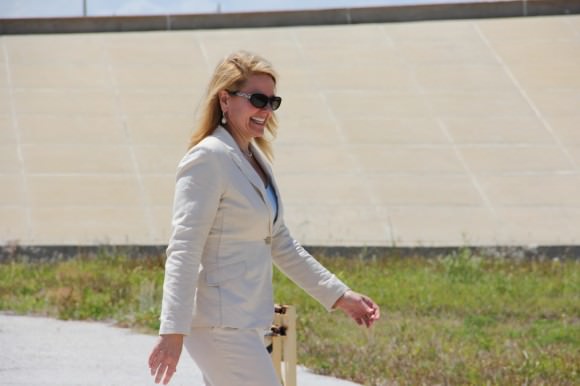
SpaceX Cargo Launch to Station “GO” for April 14 – Watch Live Here

SpaceX Falcon 9 rocket preparing for April 14, 2014 liftoff from Space Launch Complex 40 at the Cape Canaveral Air Force Station, Fla. Credit: Julian Leek
Watch the SpaceX Launch Live here – NASA TV link below[/caption]
Following closely on the heels of Thursday’s spectacular Atlas V rocket blastoff from Cape Canaveral and a last moment computer failure at the ISS over the weekend, an upgraded Space X Falcon 9 rocket is now poised to launch on Monday (April 14) and complete a double barreled salvo of liftoffs from the Florida Space Coast merely 4 days apart – if all goes well.
The SpaceX Falcon 9 rocket carrying a Dragon resupply freighter is slated to launch on Monday at 4:58 p.m. EDT, 2058 GMT, from Launch Complex 40 at the Cape Canaveral Air Force Station, Fla.
Update 4/14- 345 PM: Todays launch attempt scrubbed due to 1st stage Helium leak. Friday is earliest target date
This flight marks the third operational Dragon resupply mission to the 1 million pound International Space Station (ISS).
You can watch the launch live on NASA TV : http://www.nasa.gov/ntv
NASA TV live coverage will begin at 3:45 p.m. EDT and conclude at approximately 5:20 p.m.
Weather forecasters are predicting an 80 percent chance of favorable weather conditions at the scheduled liftoff time.
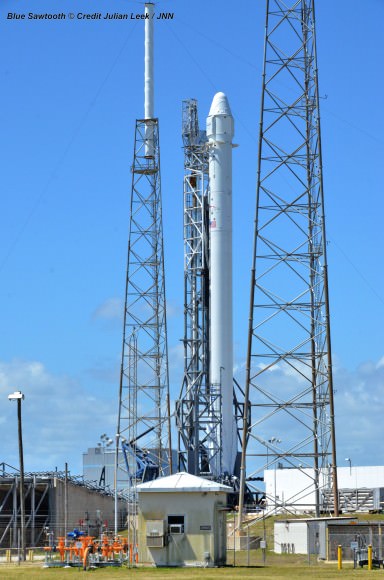
Monday’s launch was temporarily put in doubt by the unexpected loss on Friday (April 11) of a backup computer command relay box called a multiplexer/demultiplexer (MDM) that resides in the station’s S0 truss.
The primary MDM continued to function normally.
The MDM’s provide commanding to the station’s external cooling system, Solar Alpha Rotary joints, Mobile Transporter rail car and insight into other truss systems.
It must function in order for the astronauts to use the robotic arm to grapple and berth the Dragon at a station docking port when it arrives on Wednesday, April 16, at about 7 a.m. EDT.
NASA managers held an extensive series of review meetings since Friday with ISS program managers, station partners, and SpaceX to exhaustively consider all possibilities and insure it was safe to fly the Dragon mission.
NASA gave the final go ahead after a readiness review this Sunday morning of managers, engineers and flight controllers.
ISS crew members will conduct a spacewalk to replace the failed MDM unit after the Dragon arrives.
This unmanned SpaceX mission dubbed CRS-3 mission will deliver some 5000 pounds of science experiments, a pair of hi tech legs for Robonaut 2, a high definition imaging camera suite, an optical communications experiment (OPALS) and essential gear, the VEGGIE lettuce growing experiment, spare parts, crew provisions, food, clothing and supplies to the six person crews living and working aboard the ISS soaring in low Earth orbit under NASA’s Commercial Resupply Services (CRS) contract.
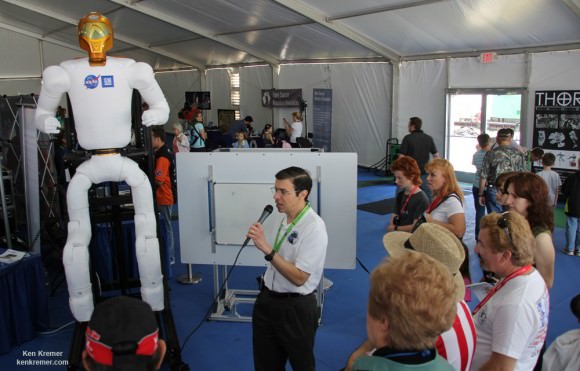
This launch has already been postponed twice since mid-March.
The original March 16 launch target was postponed 2 days before liftoff due to contamination issues with insulation blankets located inside the unpressurized trunk section of Dragon.
The second postponement from March 30 occurred when an electrical short knocked out the critical Air Force tracking required to insure a safe launch from the Eastern Range in case the rocket veers off course towards populated ares and has to be destroyed in a split second.
SpaceX is under contract to NASA to deliver 20,000 kg (44,000 pounds) of cargo to the ISS during a dozen Dragon cargo spacecraft flights over the next few years at a cost of about $1.6 Billion.
To date SpaceX has completed two operational cargo resupply missions and a test flight. The last flight dubbed CRS-2 blasted off a year ago on March 1, 2013 atop the initial version of the Falcon 9 rocket.
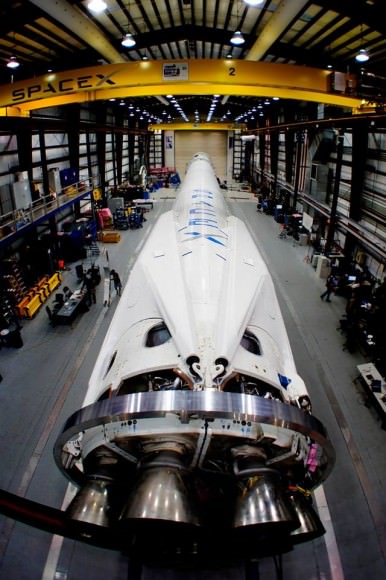
For this Falcon 9 flight, the rocket will sprout legs for a controlled soft landing in the Atlantic Ocean, guided by SpaceX engineers.
Eventually SpaceX will test land landings in a ramped up series of rocket tests
Stay tuned here for Ken’s continuing SpaceX, Orbital Sciences, commercial space, Orion, Chang’e-3, LADEE, Mars rover, MAVEN, MOM and more planetary and human spaceflight news.
Contingency Spacewalk Planned Next Week, But Dragon Must Arrive At Space Station First
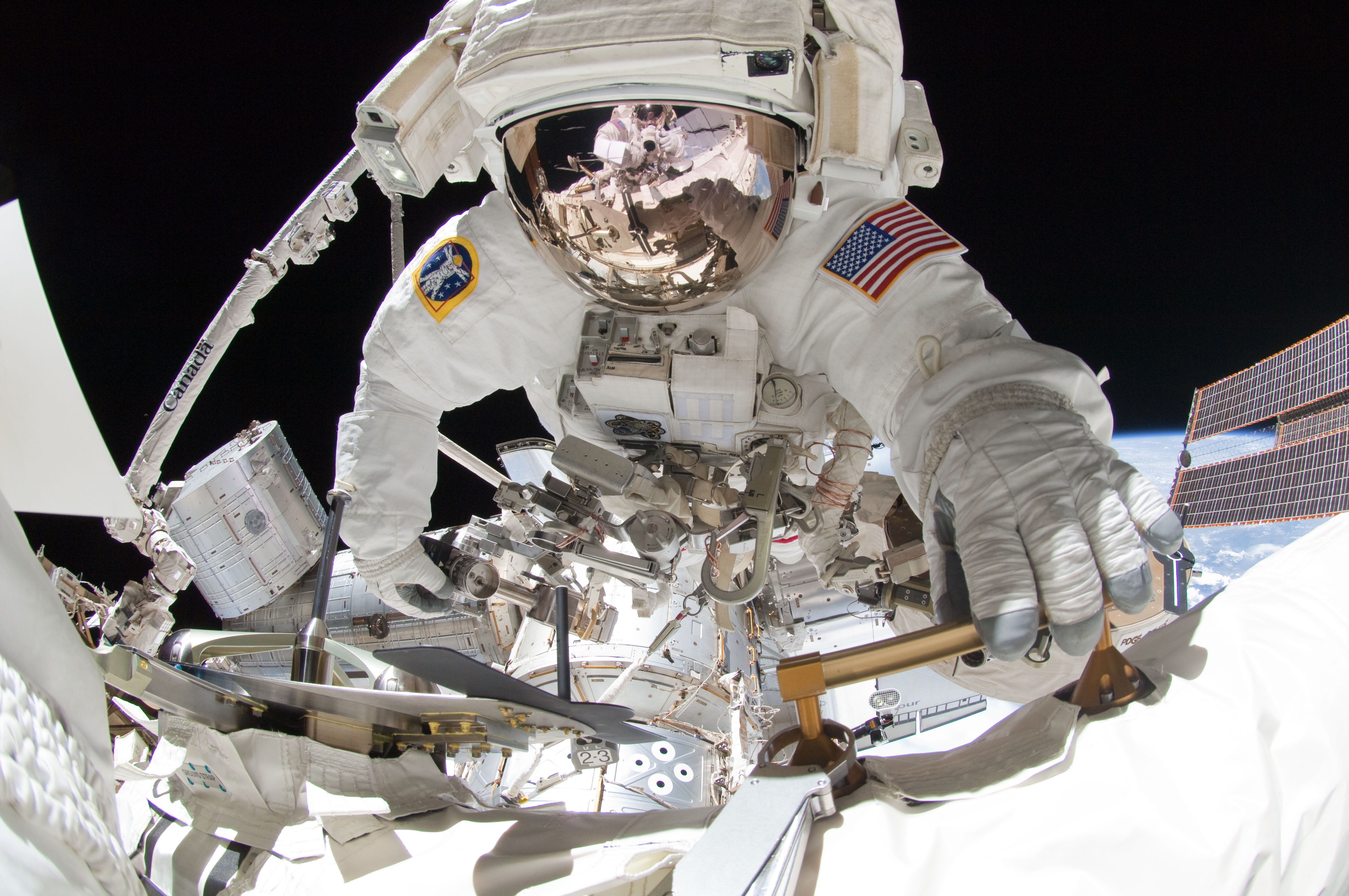
As contingency spacewalks go, the urgent task should be easy: a quick 2.5-hour run to swap out a failed backup computer that controls several systems on the International Space Station, including robotics. But NASA doesn’t want to go ahead with it until spare spacesuit parts arrive, in the aftermath of a life-threatening suit leak that took place last summer.
Those parts are on board the much-delayed SpaceX Dragon spacecraft sitting on a launch pad waiting for its next window to open. For this and other reasons, NASA decided to move ahead with the launch as planned Monday at 4:58 p.m. EDT (8:58 p.m. UTC). The spacewalk would take place April 22 — if Dragon gets there as planned on Wednesday.
“We need to get it [Dragon] on board as soon as we practically can,” said Mike Suffredini, the International Space Station’s program manager, in a phone briefing with reporters Sunday (April 13). That’s because Dragon is carrying a new spacesuit, components to fix an existing spacesuit, critical research experiments and food for the six crew members of Expedition 39.
The challenge, however, is making sure the station could be ready even if the primary multiplexer demultiplexer (MDM) fails before spacewalkers can make the backup replacement. There are more than a dozen MDMs on station, but each one controls different functions. This primary MDM not only controls a robotics mobile transporter, but also radiators and a joint to move the station’s solar arrays, among other things. The computer sits on the S0 truss on station, which you can view in the diagram below.
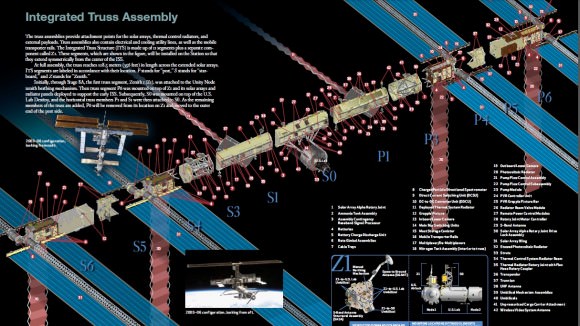
“The biggest driver for us is the positioning of the solar arrays as we look to the next failure,” Suffredini said. NASA needs to reposition the arrays when a vehicle approaches because plumes from the thrusters can put extra “loads” or electrical power on the system.
At the same time, enough power must flow to the station for it to operate. Luckily, the angle of the sun is such these days that the array can sit in the same spot for a while, at least two to three weeks, Suffredini said. NASA configured the station so that even if the primary computer fails, the array will automatically position correctly.
NASA also will move a mobile transporter on station today so that the station’s robotic arm is ready to grasp the Dragon when it arrives, meaning that even if the primary computer fails the transporter will be in the right spot. If Dragon is delayed again, the next launch opportunity is April 18 and the spacewalk would be pushed back.
Dragon’s precious payload of items includes several intended to make NASA spacewalks safer. The suit leak was due to contamination in the fan pump separator of Suit 3011 that plugged a tiny hole inside the water separation part of the unit. Water then escaped and got into the helmet, causing a near-emergency for Luca Parmitano — who was using the spacesuit in July.
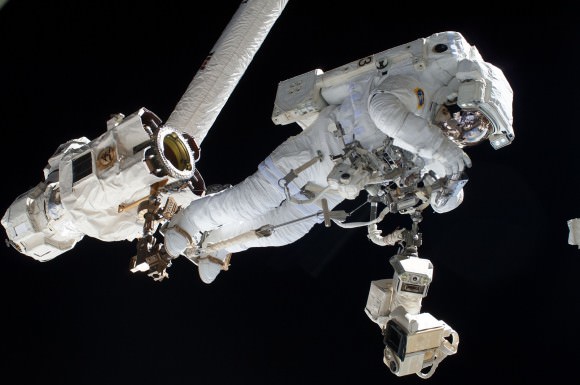
NASA installed snorkels and absorbent helmet pads into its spacesuits while awaiting the results of an investigation, and also pushing back all nonessential spacewalks. The agency now has recommendations in hand and is addressing those with the hope of resuming non-contingency spacewalks this summer.
Today, Suffredini also provided an update on what the contamination was. “The anomaly was the result of contamination introduced by filters essentially used to clean and scrub the water loops for us,” he said.
“Those introduced large amounts of silica into the system, and that silica eventually coagulates in the area of the fan pump sep [separator] and after many uses, it eventually can build up to the point where it plugs the holes and you can’t separate the water from the air.”
The next spacewalk will use Suit 3011 (which got a new fan pump separator for contingency spacewalks in December) and Suit 3005, which will use the new separator on board Dragon. The cooling lines on spacesuits on board station have been purged with fresh water to reduce the silica buildup, and astronauts will use new filters that they know are clean.
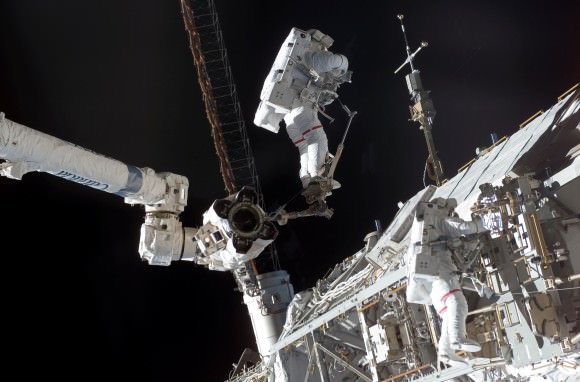
If for some reason Suit 3005 can’t be used, Suffredini added, the new suit could be put in place instead after some testing to make sure it’s ready. “We’re in a very good posture for the EVA [extra-vehicular activity],” Suffredini said.
NASA hasn’t decided who will go on the spacewalks yet, he added. There are at least two or three spare MDMs on station; the one needed for this particular spacewalk is inside the U.S. Destiny laboratory, which is handily right next to the S0 truss and spacesuit worksite.
Of the “big 12” repair jobs the astronauts train for, the MDM replacement is among the easiest, Suffredini said, adding astronauts never encountered an external MDM failure on station before.
The last set of contingency spacewalks took place in December to replace a failed ammonia pump that affected science experiments on station. Expedition 39’s Rick Mastracchio was among the pair “outside” during those spacewalks.
We will keep you apprised as circumstances warrant.
Failed Space Station Computer Spurs Contingency Spacewalk Plans
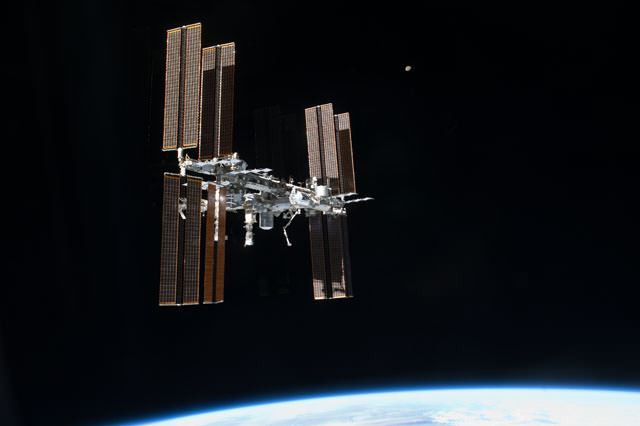
NASA is preparing a contingency spacewalk to deal with a broken backup computer component on the International Space Station, the agency said in an update Saturday (April 12). While there’s no timeline yet for the spacewalk, the agency must consider carefully when to do it given a cargo ship is supposed to arrive at station on Wednesday.
The SpaceX Dragon spacecraft — already delayed due to an unrelated radar problem — is still scheduled to launch Monday at 4:58 p.m. EDT (8:58 p.m. UTC) to arrive at station two days later. Although the computer controls some robotic systems, NASA added the Canadarm2 that will grapple Dragon has other redundancies in place. The question is if the station itself has enough redundancy for the launch to go forward.
“A final decision on whether to launch Dragon Monday will not be made until another status meeting is conducted Sunday morning,” NASA stated.
The failure poses no risk to the crew and normal station operations are not affected, NASA emphasized. The failure was uncovered Friday “during a routine health check” of a box called EXT-2, which backs up a primary component that sits outside on the S0 truss (near the station’s center).
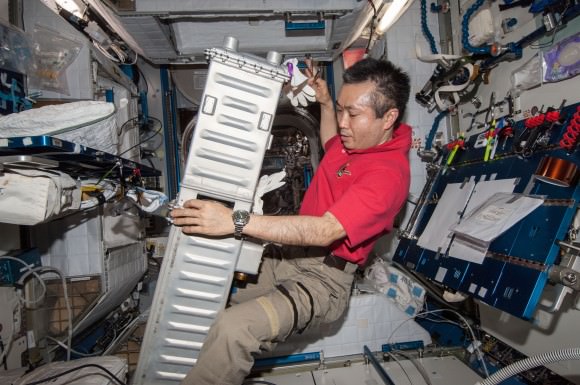
Earlier Saturday, a docked Progress robotic spacecraft boosted the station’s altitude in a planned maneuver to ready for the next Soyuz spacecraft launch, which will carry half of the Expedition 40 crew in May.
If spacewalks do go forward, this would be the second required contingency set required since Luca Parmitano experienced a life-threatening leak in a NASA spacesuit last July. NASA ordered an investigation, received a report in February and has halted all nonessential spacewalks while it addresses the recommendations. (Russian spacewalks in Orlan spacesuits are unaffected.)
The only NASA spacewalks that happened since summer took place in December, when an ammonia pump failure crippled science experiments on station. NASA’s Rick Mastracchio and his now returned-to-Earth crewmate Mike Hopkins performed two contingency spacewalks, successfully replacing the pump. The agency has snorkels and absorbent pads ready for its spacesuits as backup if another leak occurs.
You can read the entire NASA update here. We will keep you apprised as circumstances warrant.
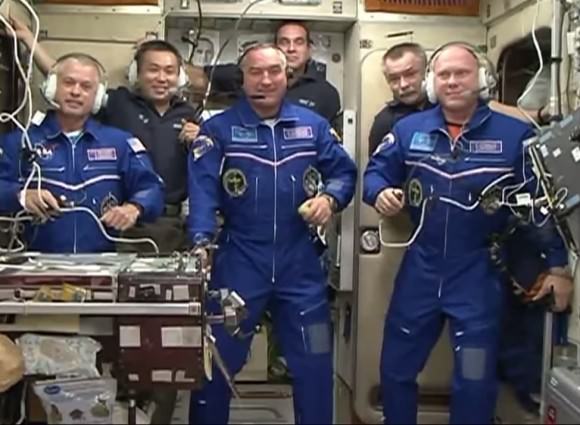
Backup Computer Glitches On Space Station But Crew Safe, NASA Says
A backup computer that controls “some systems associated with robotics” on the International Space Station is not “responding to commands”, NASA said in a late-night statement Eastern time Friday (April 11).
The crew is safe, there’s no “immediate” change to space station operations, and because the primary computer is working, there’s also no alteration to the SpaceX Dragon launch to the station on Monday — which requires the robotic Canadarm2 for berthing. NASA added, however, that there are “further evaluations” going on, meaning the date could change depending on what controllers figure out.
If the computer does need to be replaced, crew members of Expedition 39 will need to do at least one spacewalk, the agency added. NASA is allowing contingency spacewalks in American spacesuits to go forward as the agency addresses problems raised in a report about a life-threatening spacesuit leak in July.
Below the jump is the statement NASA put out tonight concerning the situation.
The Mission Control team at NASA’s Johnson Space Center in Houston confirmed Friday night that a backup computer on the exterior of the International Space Station (ISS) called a Multiplexer-Demultiplexer (MDM) is not responding to commands. The station’s MDM computers control some systems associated with robotics aboard the space station.
The primary MDM operating aboard the space station is functioning normally and there is no immediate impact to space station operations. The computer outage does not pose a risk to the six crew members aboard the space station. ISS teams are assessing next steps to attempt to bring the computer back online or replace it.
Replacing the backup MDM, if needed, would require a spacewalk. The backup MDM would provide redundancy for robotic systems that will be needed to attach the SpaceX Dragon spacecraft currently scheduled to launch on Monday and rendezvous with the ISS on Wednesday. NASA is continuing to work toward a Monday launch of the SpaceX cargo resupply mission pending further evaluations by the ISS Program. The latest information will be available here at www.nasa.gov/station.
We will keep you apprised as the situation progresses.
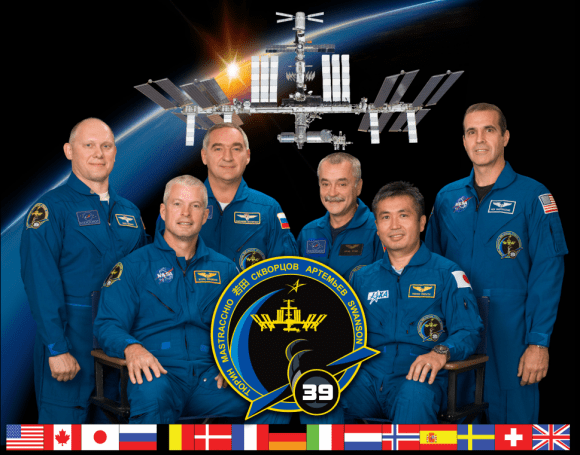
A Salad Bar for the Space Station
Freeze-dried bags of dehydrated “astronaut food” may seem like a fun novelty for school kids on Earth, but despite all the hard work that goes into providing the residents of the Space Station with nutritious and varied meal options there’s one thing that remains a rare and elusive commodity on astronauts’ menus: fresh produce.
Although fruit and vegetables do occasionally find their way aboard the ISS via resupply missions (to the delight of the crew) researchers are moving one step closer to actually having a vegetable garden in orbit. On Monday, April 14 Friday, April 18, NASA’s Veg-01 experiment will launch to the ISS aboard a SpaceX Dragon capsule to test the in-flight viability of an expandable plant growth chamber named “Veggie.”
In development for several years, Veggie is now getting its chance to be space-tested with the launch of the SpaceX-3 resupply mission. Veggie uses clear collapsible bellows as miniature greenhouses, inside which plant “pillows” can be cultivated with the aid of root-mats and a bank of LED lights.

Astronauts will see how well “Outredgeous” romaine lettuce fares in microgravity inside the Veg-01 experiment, and can also use the LED bank as a light source for other experiments.
“Veggie will provide a new resource for U.S. astronauts and researchers as we begin to develop the capabilities of growing fresh produce and other large plants on the space station,” said Gioia Massa, the NASA payload scientist for Veggie. “Determining food safety is one of our primary goals for this validation test.”
While other plant-growth experiments are currently aboard ISS, Veggie boasts the simplest design and largest growing area of any of them to date.
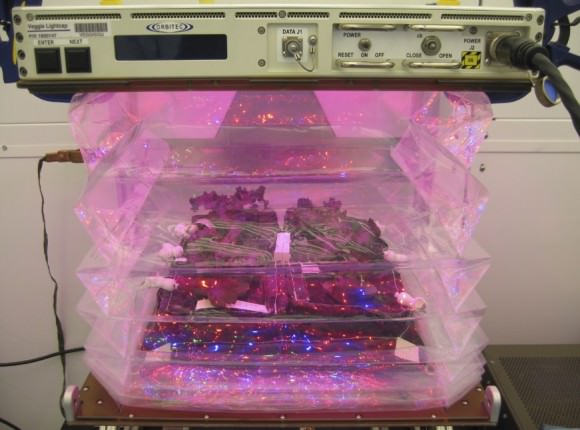
“Our hope is that even though VEGGIE is not a highly complex plant growth apparatus, it will allow the crew to rapidly grow vegetables using a fairly simple nutrient and water delivery approach.”
– Howard Levine, Ph.D. and chief scientist at Kennedy Space Center (2012)
In addition to providing fresh food, maintaining a miniature garden in orbit would be therapeutic for astronauts on long-duration missions.
“Based upon anecdotal evidence, crews report that having plants around was very comforting and helped them feel less out of touch with Earth,” Massa said. “You could also think of plants as pets. The crew just likes to nurture them.”
The Veggie system was developed for NASA by Orbital Technologies Corporation (ORBITEC) in Madison, Wisconsin, via a Small Business Innovative Research Program. Its innovations may eventually lead to better food production not only in space but also in limited-resource regions on Earth.
With the ultimate success of Veggie, ISS astronauts may soon find themselves floating in line at the in-house salad bar. (Watch out for those rogue croutons!)
Read more in the NASA news article by Linda Herridge here, and learn more about the Veggie project here.
Weekly Space Hangout – April 11, 2014: Exomoons, Eclipses & Launches
Host: Fraser Cain
Astrojournalist: Morgan Rehnberg(cosmicchatter.org / @cosmic_chatter)
Continue reading “Weekly Space Hangout – April 11, 2014: Exomoons, Eclipses & Launches”
US Spy Sat and SpaceX Set for Double Barreled Blastoffs After Critical Cape Canaveral Radar Revitalized
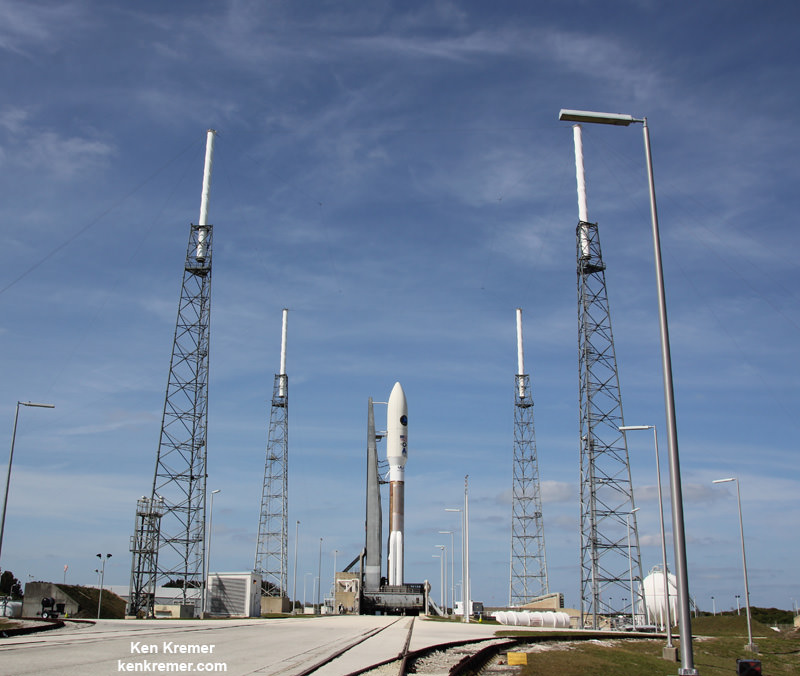
The Florida Space Coast is about to ignite with a doubled barreled dose of spectacular rocket launches from Cape Canaveral over the next few days that were suddenly postponed two weeks ago amidst final launch preparations when an electrical short completely knocked out use of the US Air Force’s crucial tracking radar that is mandatory to insure public safety.
A pair of liftoffs vital to US National Security and NASA/SpaceX are now slated for April 10 and April 14 from Cape Canaveral Air Force Station after revitalizing the radar systems.
The tracking radar is an absolutely essential asset for the Eastern Range that oversees all launches from Cape Canaveral Air Force Station and the Kennedy Space Center in Florida.
The United Launch Alliance Atlas V is now slated to launch on Thursday, April 10 at 1:45 p.m. EDT.
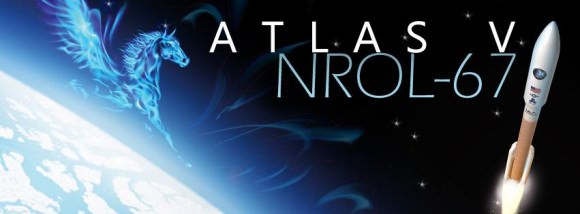
The Atlas V rocket is carrying the super secret NROL-67 intelligence gathering spy satellite for the National Reconnaissance Office (NRO).
The SpaceX Falcon 9 is slated to launch on Monday, April 14 at 4:58 p.m. EDT.
The Falcon 9 is lofting a SpaceX Dragon cargo ship and delivering some 5000 pounds of science experiments and supplies for the six man space station crew – under a resupply contract with NASA.
The pair of liftoffs of the Atlas V and Falcon 9 boosters for the NRO and SpaceX/NASA had been slated just days apart on March 25 and March 30, respectively.
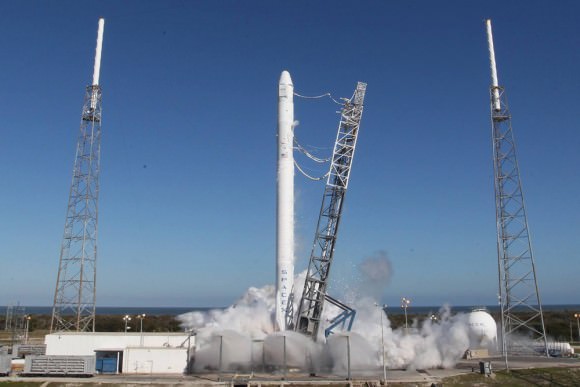
I was on site at Cape Canaveral Launch Pad 41 photographing the Atlas V rocket carrying the NRO payload in anticipation of the launch.
Shortly thereafter a fire of unexplained origin in the radar equipment unexpected occurred and knocked the tracking radar off line. When no quick fix was possible, both launches were delayed indefinitely pending repairs.
“The tracking radar experienced an electrical short, overheating the unit and rendering the radar inoperable,” said the USAF in a statement I received from the 45th Space Wing that controls the critical launch control systems, communications, computers and radar elements at the Eastern Range.
On Monday, April 7, the Air Force announced that range repairs were on target and that a retired, inactive radar had been brought back online.
“A radar that was previously in standby status has been brought back to operational status while the repair work is being accomplished,” said the USAF in a statement.
A fully functional tracking radar is an absolute requirement to ensure the success and safety of every rocket launch.
Insufficient maintenance and antiquated equipment due to a lack of US government funding and investment in infrastructure may be at fault for the electrical short.
The Eastern range radar must function perfectly in order to destroy any rocket in a split second in the event it abruptly veers off course towards the nearby populated areas along the Florida Space Coast.
The Atlas V rocket was rolled out earlier today to Space Launch Complex 41 in preparation for Thursday’s NROL-67 launch. The weather forecast shows a 90 percent chance of favorable weather conditions for launch.
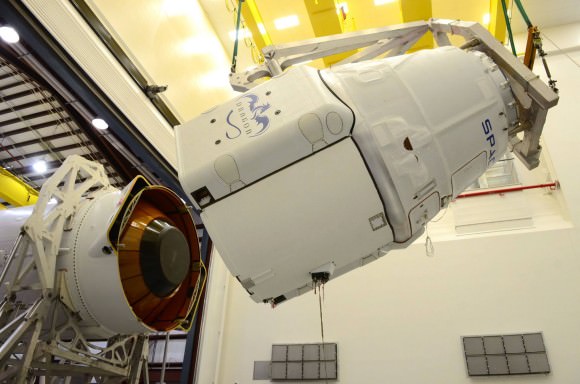
Stay tuned here for Ken’s continuing Atlas V NROL 67, SpaceX, Orbital Sciences, commercial space, Orion, Chang’e-3, LADEE, Mars rover, MAVEN, MOM and more planetary and human spaceflight news.
Learn more at Ken’s upcoming presentations at the NEAF astro/space convention, NY on April 12/13.

